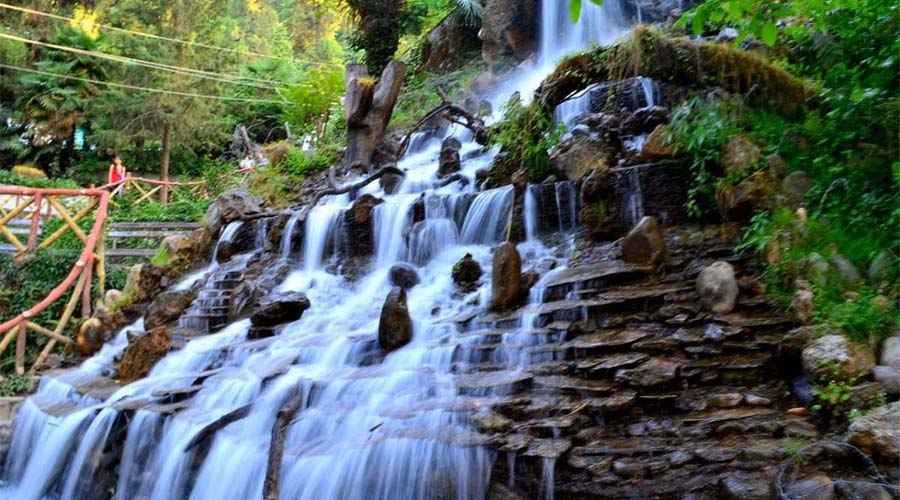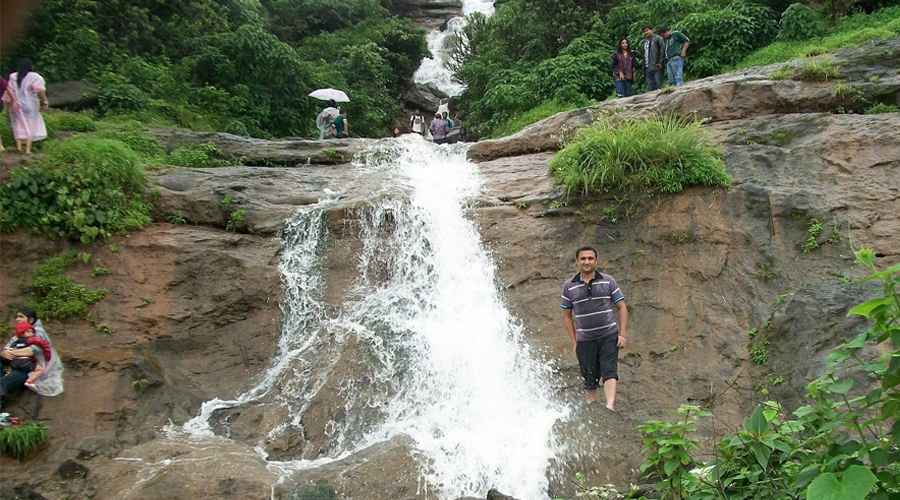When one thinks of Mussoorie, the “Queen of Hills,” images of bustling Mall Road, colonial-era architecture, and panoramic Himalayan views often come to mind. Yet, beyond the familiar sights lies a treasure that quietly enchants all who discover it—Jharipani Waterfall. Tucked away about 9 kilometers from Mussoorie, this waterfall offers an escape into the heart of Uttarakhand’s natural beauty. Unlike the more commercialized attractions of the hill station, Jharipani remains relatively untouched, making it a haven for nature enthusiasts, trekkers, photographers, and anyone craving serenity.
The Charm of Jharipani
At its core, Jharipani Waterfall embodies the raw essence of the Himalayas. Cascading down rocky slopes, the waterfall is surrounded by thick forests of rhododendron, pine, and oak. During and after the monsoon months, its volume swells dramatically, creating a mesmerizing curtain of water set against verdant greenery. Visitors often describe the sound of rushing water mingling with birdsong as a form of natural therapy, something far removed from the tourist rush elsewhere in Mussoorie.
What makes Jharipani truly special is its blend of accessibility and wilderness. Though it requires a bit of a trek downhill from the main road, the path leading to the falls is an adventure in itself. Along the way, one is greeted with sweeping vistas of the Doon Valley, terraced fields, and even distant views of snow-capped Himalayan peaks on clear days.
A Paradise for Trekkers and Nature Lovers
The journey to Jharipani Waterfall is as rewarding as the destination. The last stretch involves walking down a somewhat steep trail, making it perfect for those who enjoy light trekking. While it isn’t overly challenging, the descent gives travelers a sense of disconnect from the chaos of daily life, drawing them deeper into an unspoiled natural world.
Birdwatchers find this location especially rewarding. Paradise flycatchers, Himalayan bulbuls, and a variety of other colorful species can be spotted in the dense foliage. The constant interplay of sunshine through the canopy creates an almost magical setting for photographers, especially in the early morning or late afternoon. For adventure seekers, Jharipani often serves as a resting point on longer treks across nearby trails.
Best Time to Visit Jharipani Waterfall
While Jharipani is accessible year-round, its character changes with the seasons.
- Summer (March to June): Pleasant weather makes trekking comfortable, and the waterfall flows steadily with snowmelt. This is the best season for outdoor picnics and extended photography sessions.
- Monsoon (July to September): The falls are at their most powerful, crashing down in full glory. However, the trek becomes slippery, so visitors must exercise caution. The lush greenery during this time is at its most vibrant.
- Winter (October to February): The region becomes crisp and quiet, with some days offering clear views of the distant Himalayas. While the waterfall’s volume decreases, the surrounding tranquility adds a mystical charm.
Most travelers prefer summer and early monsoon for a blend of safety and invigorating views.
Local Flora and Fauna
Jharipani is home to a rich variety of Himalayan flora. Wild ferns, orchids, and moss carpet the rocks near the falls. Towering trees of deodar and oak dominate the landscape, giving the area its distinctive alpine feel. During spring, wildflowers bloom in bursts of color, turning the trek into a scenic delight.
The fauna here reflects Mussoorie’s broader biodiversity. Apart from dozens of bird species, small mammals like langurs and occasional mountain foxes can be spotted. Butterfly enthusiasts will also find the area rewarding, as the rocky clearings are often filled with multicolored wings fluttering near the stream.
Activities Around Jharipani
Visiting Jharipani Waterfall is not only about admiring its beauty but also engaging with the environment through experiences.
- Picnics and Relaxation: Families and groups of friends often carry packed food and relax near the waterfall, soaking in the serene ambience.
- Photography: The site offers striking opportunities for landscape as well as close-up shots of water patterns, plant life, and wildlife.
- Trekking and Hiking: Short trails stemming from the waterfall connect to nearby villages and viewpoints.
- Meditation and Reflection: The natural seclusion and sound of water make it an ideal spot for meditation or quiet reflection.
Though not extensively commercialized, a few local tea stalls near the approach offer light refreshments. Visitors who prefer more comfort can plan their trip with accommodation options in Mussoorie, which range from luxury hotels to cozy homestays.
Historical and Cultural Touches
Interestingly, Jharipani is located close to Jharipani village, which has historical links to colonial times. The nearby Jharipani Castle, built during the British Raj, is now a heritage hotel. Many colonial officers and families once frequented this area, drawn by its pristine environment. Today, the castle still offers glimpses of bygone architecture and panoramic valley views, making it worth a stop either before or after visiting the falls.
Local villagers often narrate folk tales associated with the forest around Jharipani, adding another layer of cultural richness to a visit. For travelers interested in authentic rural life, interacting with the villagers offers insight into traditional Himalayan farming practices and way of living.
How to Reach Jharipani Waterfall
Jharipani lies about 7 kilometers from Mussoorie on the Dehradun-Mussoorie road. Travelers can hire taxis, local jeeps, or even take shared cabs up to Jharipani village. From there, the trek down to the waterfall takes around 15 to 20 minutes. The trail is rocky but manageable with a decent pair of walking shoes.
From Dehradun, it takes about one hour to reach Jharipani by road. The nearest railway station and airport are both in Dehradun, making the waterfall accessible for weekend getaways from Delhi, Chandigarh, or other parts of North India.
Tips for Visitors
- Wear comfortable trekking shoes with good grip, especially during monsoon.
- Carry a water bottle and light snacks since there are limited food stalls near the site.
- Avoid littering, and respect the environment by following eco-friendly practices.
- If visiting during monsoon, check weather forecasts to avoid heavy downpours.
- For families with children, the downhill trek requires extra caution.
Why Jharipani Stands Out
Mussoorie has several waterfalls—like Kempty and Bhatta—but Jharipani offers a distinctive experience. Unlike Kempty, which is crowded and commercial, Jharipani is tranquil, offering exactly what many seek in the hills: peace and rejuvenation. Its relatively untouched charm makes it a hidden jewel that retains authenticity.
Travelers often return describing Jharipani as a reminder of how pristine Mussoorie once was before tourism intensified. For anyone keen on rediscovering calm amidst nature, this waterfall is a must-visit.


